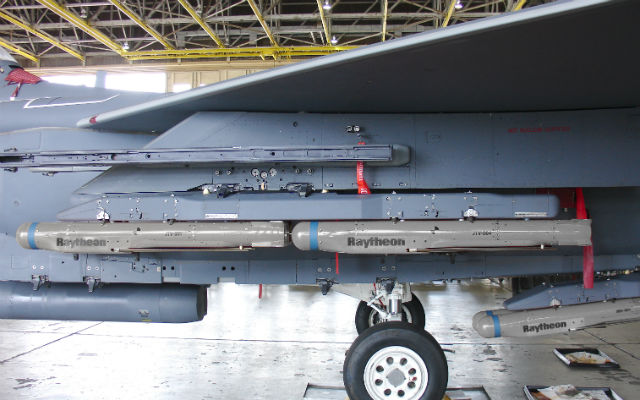The Pentagon has given Milestone C approval to Raytheon’s Small Diameter Bomb II programme, moving the tri-mode seeker weapon to production and deployment with the US Air Force on the F-15E Strike Eagle.
The air force’s top acquisition executive Bill LaPlante says the approval was received earlier this month, concluding a five-year development phase. The programme is about one year behind schedule due to a handful of failed test shots, but remains on cost.
According to LaPlante, it was a fixed-cost development program that was meant to take four years instead of five, but Raytheon managed its workforce well and controlled costs and the price per bomb has dropped as a result.

Raytheon
“The program was a Milestone B in the summer of 2010,” he says, referring to the point when a military programme enters the development and testing phase. “The goal of the cost per weapon was about $180,000. It’s coming in at about $115,000.”
The air force has already started integrating the weapon with its first aircraft, the F-15 Strike Eagle. The Navy plans to integrate it first with the F/A-18 Super Hornet and then with its threshold aircraft, the F-35C and F-35B Joint Strike Fighters.
Raytheon’s tri-mode seeker allows the bomb to hit fixed and moving targets on land and at sea through poor weather conditions with pinpoint accuracy.
Boeing’s Increment 1 Small Diameter Bomb is being heavily used in the air campaign against Islamic State in Iraq and Syria, the air force says. The bomb’s smaller diameter allows each fighter to carry more weapons per sortie.
Source: FlightGlobal.com























